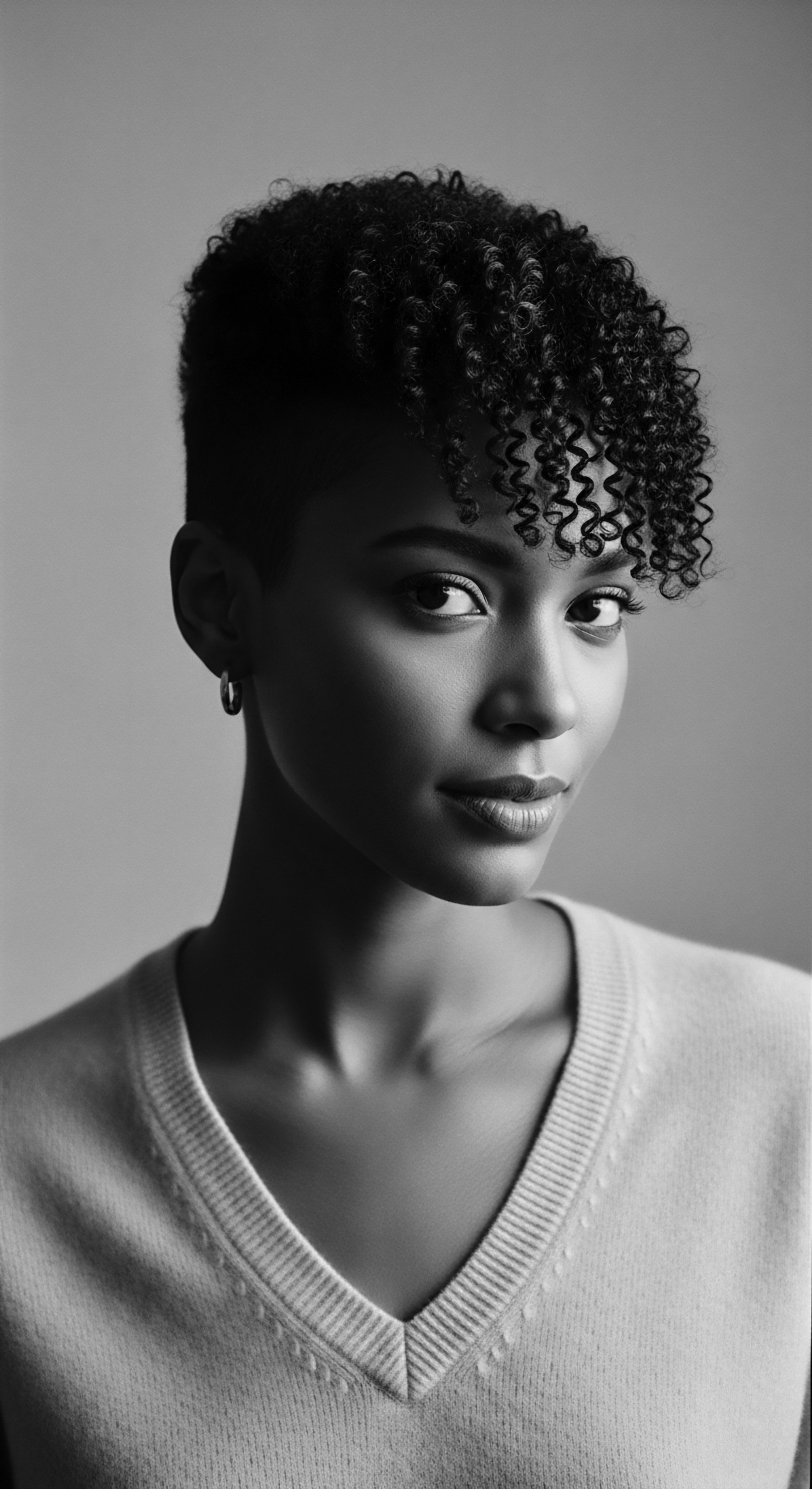
Roots
Consider, if you will, the quiet language of a single strand, unspooled from a coiled crown. It is not a silent thing, this helix of life, but a whisper passed down through generations, bearing tales of lineage and dominion, of community and belonging. Within the very architecture of textured hair lies a profound chronicle of human experience, a testament to ancestral ingenuity and collective identity.
From its nascent form, spun from protein and pigment, textured hair has served not merely as adornment but as a living canvas upon which societies inscribed their hierarchies and their values. This exploration traces how ancient wisdom, elemental biology, and deliberate care practices converged to transform the very fiber of one’s being into a declaration of social standing, a silent yet potent proclamation of who one was in the world.

The Ancestral Helix ❉ Decoding Hair’s Blueprint
The origins of hair’s symbolic weight begin, perhaps, with its sheer presence and resilience. Textured hair, with its unique follicular structure – often elliptical or flattened, creating a characteristic curl or coil – offered a distinct medium for expression. Unlike straight hair, its natural inclination to defy gravity, to form intricate patterns, and to maintain shape lent itself readily to elaborate styling.
These inherent properties were recognized by early communities, leading to care rituals and adornments that were far from incidental. They were, in truth, an extension of the self, a visible marker in a world where visual cues held significant sway over one’s place in the communal fabric.
Early societies developed an intimate understanding of hair’s physical characteristics, a knowledge born from centuries of observation and tactile interaction. The varying diameters, curl patterns, and densities of textured hair were not just aesthetic distinctions; they were often linked to a person’s familial line, their geographic origin, or even the climate of their ancestral lands. This organic classification, predating modern trichology, was deeply ingrained in communal awareness.
It was understood, for instance, that certain hair types held particular blessings or vulnerabilities, requiring specific methods of handling and ornamentation. The very act of caring for and styling textured hair was thus a continuous dialogue with its inherent biology, a recognition of its unique qualities that set it apart.
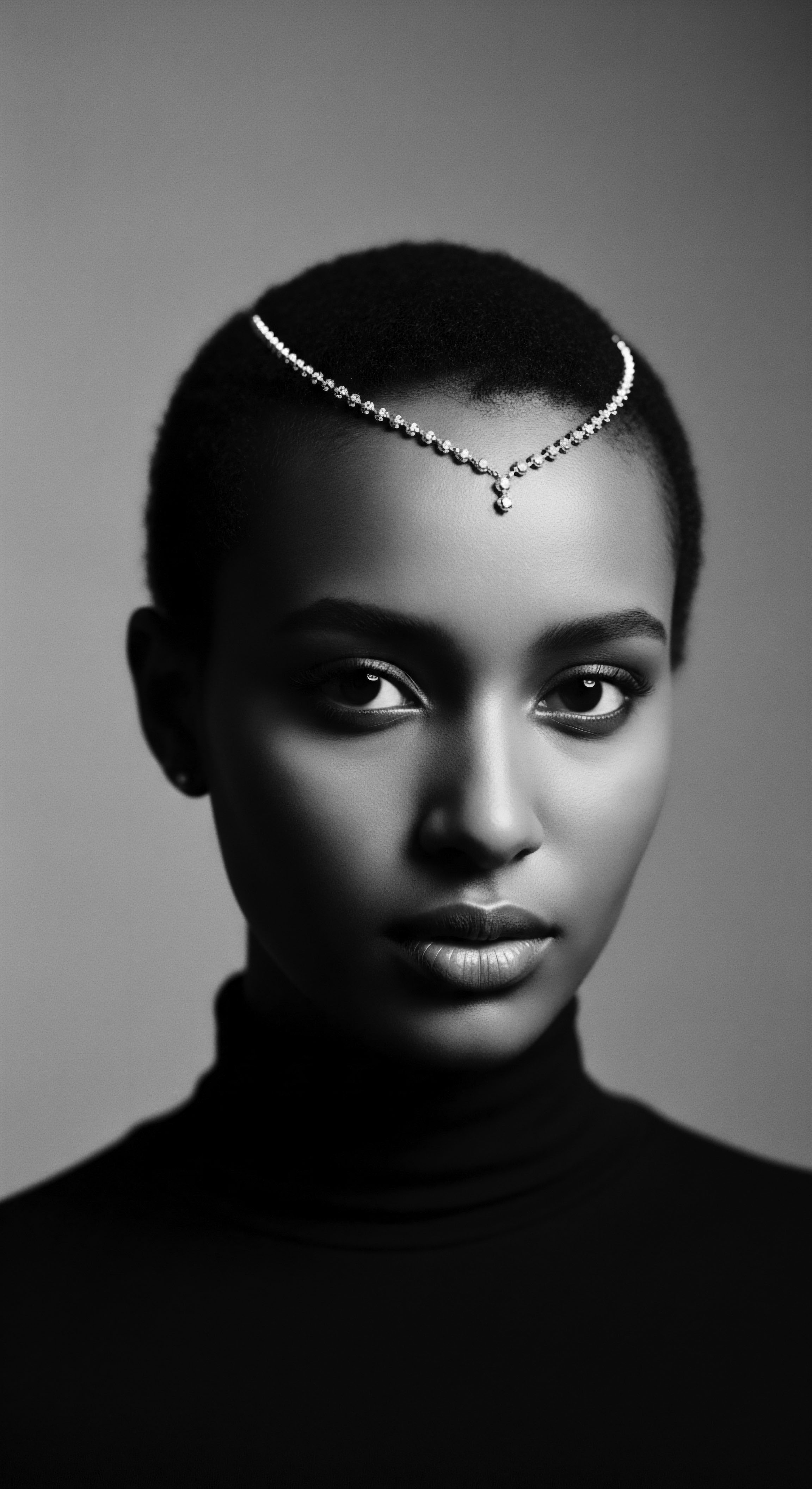
Early Societal Classifications of Hair and Social Order
In many pre-colonial African societies, hair was a social compass, its every twist and plait pointing to a specific position within the community. The intricacies of a hairstyle could speak volumes ❉ announcing marital status, age, wealth, religious affiliation, or even a person’s readiness for war or initiation into adulthood. For instance, among the Yoruba People of West Africa, the elaborate weaving of hair into intricate patterns, such as the famous ‘suku’ or basket style, was often reserved for queens, priestesses, and women of high social standing. The complexity, height, and ornamentation of these styles required immense skill and time, signifying the wearer’s leisure and the availability of skilled stylists—a privilege of the affluent.
Textured hair traditions served as a profound non-verbal language, conveying an individual’s social standing and identity within their community.
Consider the ancient Egyptians, who, though often depicted with smooth, dark wigs, also practiced intricate hair styling for their natural textured hair. Wigs, frequently crafted from human hair, vegetable fibers, or sheep’s wool, were not just for hygiene or comfort in the harsh climate; they were powerful status symbols. The wealthier and more influential individuals possessed larger, more elaborate wigs, often adorned with gold, jewels, and perfumed cones, indicating their elevated rank. Even the style of a wig could signify one’s profession or status, from the simple bob of a commoner to the complex, braided headdresses of royalty and nobility.
This practice underscores how even external hair coverings were deeply tied to an individual’s perceived worth and placement within society. (Robins, 1993)
The vocabulary used to describe hair, too, was steeped in social meaning. Traditional terms for specific hair textures or styles often carried connotations of honor, purity, or strength. For instance, certain terms might describe hair as ‘blessed’ or ‘crowned,’ associating its physical characteristics with spiritual or societal favor.
The linguistic heritage connected to hair offers a window into how these communities conceptualized beauty, power, and the individual’s role in the collective. It was a language that understood the innate diversity of textured hair, celebrating its variations not as deviations, but as manifestations of life’s rich spectrum.
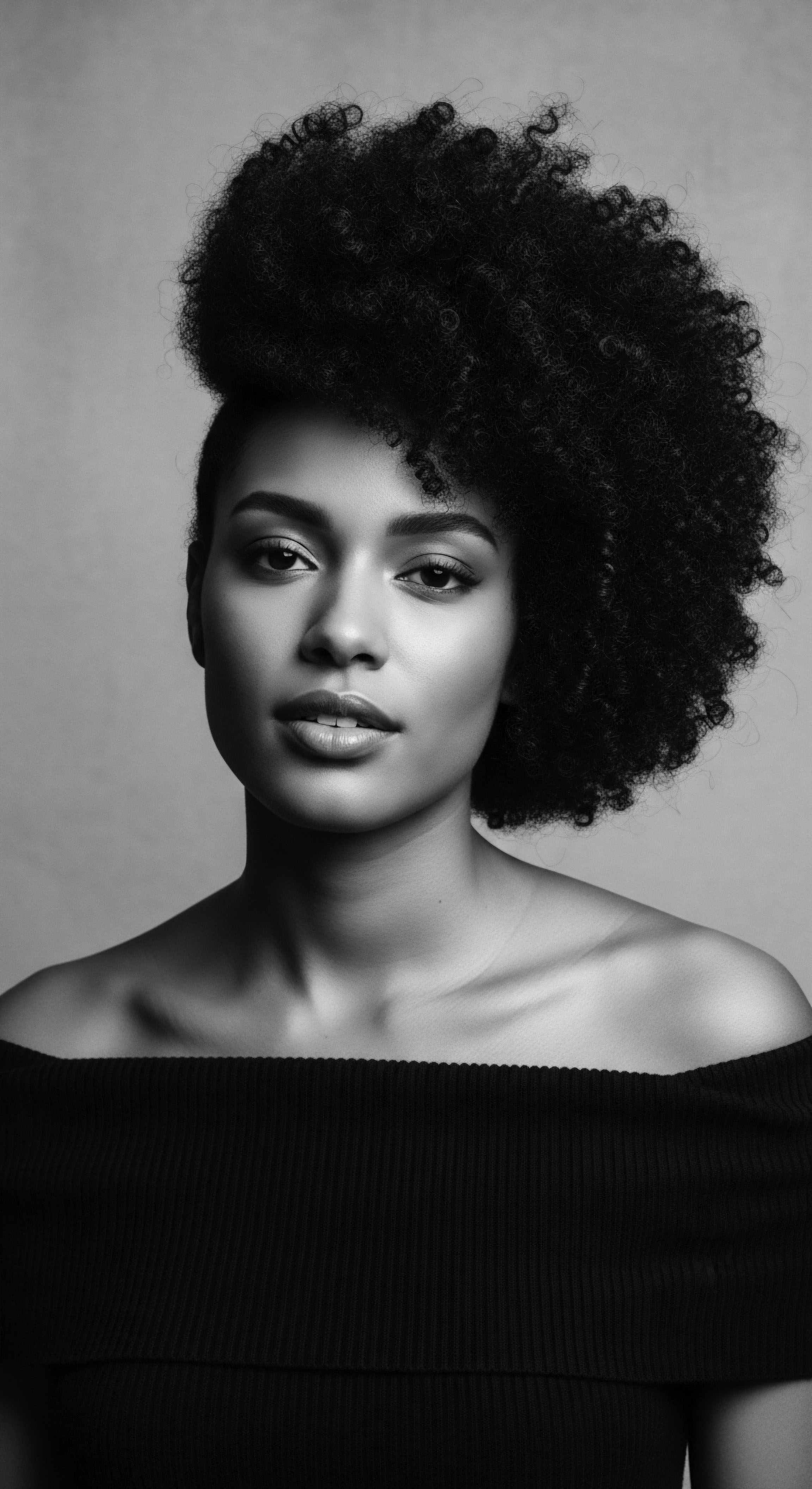
Ritual
The tender thread of hair care, stretching back through millennia, speaks not only of hygiene but of deep communal bonds and social declarations. Hair styling was rarely a solitary endeavor; it was often a communal ritual, a time for sharing stories, transmitting wisdom, and reinforcing social structures. The techniques, the tools employed, and the transformative power of these styling sessions went far beyond aesthetics.
They became a public performance of one’s place in the world, a visible code understood by all. Through these practices, textured hair became a dynamic marker, constantly shaped and re-shaped to express individual and collective identities.

Ancestral Roots of Protective Styling
Protective styling, a cornerstone of textured hair care today, has origins that predate modern cosmetology by centuries, if not millennia. These ancestral methods, such as braiding, twisting, and coiling, were not merely practical ways to manage hair; they were highly developed art forms, each style conveying specific messages about the wearer’s social identity. For communities like the Himbal People of Namibia, their iconic ‘otjize’ mixture of butterfat, ochre, and aromatic resin, applied to their dreadlocked hair, serves as a powerful symbol of their cultural identity, marital status, and aesthetic values. A woman’s hair, elaborately styled and maintained, signals her eligibility, her age, and her social standing within the Himba communal structure.
Across various African civilizations, specific braid patterns indicated a person’s age group, marital status, or even their village of origin. For example, some patterns were reserved for elders, signifying wisdom and experience, while others marked young women ready for marriage. During times of war, certain styles might be adopted to signify a warrior’s readiness or mourning for the fallen.
These styles were not static; they evolved, reflecting shifts in social conditions, power dynamics, and cultural exchange. The very act of creating these styles, often taking hours, sometimes days, was a communal event, fostering intergenerational learning and strengthening social ties.
- Knotless Braids ❉ While seemingly modern, the principle of creating tension-free braided styles to preserve hair health echoes ancient practices where hair protection was paramount, particularly for agricultural communities or those needing long-lasting styles for travel.
- Cornrows ❉ These foundational braids, laid flat against the scalp, have deep roots across numerous African societies. Their intricate patterns often served as maps or conveyed spiritual messages, and their complexity could denote the wearer’s social standing or tribal affiliation.
- Locs ❉ Beyond their spiritual significance in many cultures, locs in certain West African traditions (e.g. among the Maasai and Rastafarians) have historically been associated with warriors, spiritual leaders, or those who have taken specific vows, marking them as distinct within their social fabric.

The Symbolic Weight of Tools and Adornments
The tools used in hair styling were themselves objects of cultural significance and, at times, indicators of social standing. Ornate combs carved from wood or ivory, often passed down through generations, were more than utilitarian instruments. They were heirlooms, imbued with ancestral memory, and their possession could signify status or lineage.
Shells, beads, cowries, and precious metals were frequently incorporated into hairstyles, transforming them into veritable crowns. The quantity and quality of these adornments were direct reflections of an individual’s wealth, influence, and social capital.
For some, the sheer volume or length of hair, enhanced through extensions made from natural fibers, human hair, or even animal fur, indicated a person’s prosperity or their connection to powerful spirits. The practice of adding length and fullness was widespread, and the materials used for these additions often came with their own set of social values. A woman wearing extensions crafted from rare, imported fibers, for example, would instantly communicate a different social stratum than one whose extensions were made from more common, local materials. These practices underscored a universal human inclination to use the body, and particularly hair, as a public declaration of one’s place in the societal hierarchy.
| Historical Period/Context Pre-Colonial West Africa (e.g. Yoruba) |
| Hair Tradition as Social Marker Elaborate 'Suku' braids, intricate updos. |
| Implied Social Standing/Meaning Royalty, wealth, spiritual authority, marital status, wisdom. |
| Historical Period/Context Ancient Egypt (Dynastic Period) |
| Hair Tradition as Social Marker Large, ornate wigs adorned with gold and jewels. |
| Implied Social Standing/Meaning Pharaohs, nobility, high priests/priestesses, hygiene, purity. |
| Historical Period/Context Himbal People (Present Day) |
| Hair Tradition as Social Marker 'Otjize' coated dreadlocks. |
| Implied Social Standing/Meaning Cultural identity, marital status, age group, beauty standards. |
| Historical Period/Context Hair practices across time reflect a continuous, dynamic negotiation of social roles and communal values within textured hair heritage. |
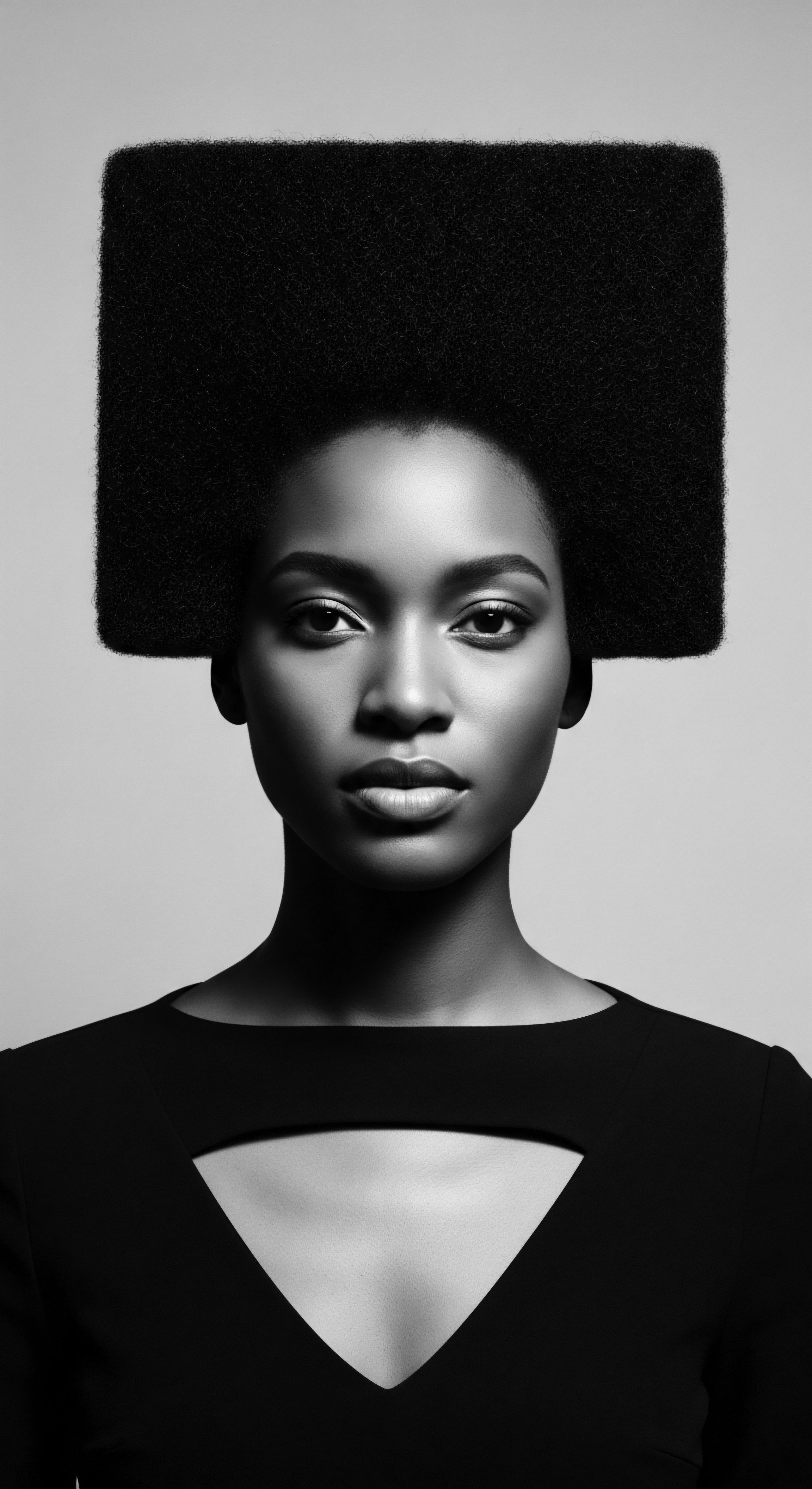
Relay
The journey of textured hair as a societal barometer did not halt with the arrival of new cultures or the imposition of new power structures. Instead, its language simply adapted, became more coded, and sometimes, more urgent. As societies shifted, so too did the meaning ascribed to hair, sometimes through deliberate suppression, at other times through acts of profound resilience and cultural reclamation. The echoes of ancestral practices resonated, even when twisted or muted, continuing to signal social standing, albeit often within a landscape of oppression and resistance.

The Tignon Laws and Suppressed Expression
The stark reality of hair’s social power is perhaps nowhere more acutely illustrated than in the historical attempts to control and diminish it. A powerful example is the institution of the Tignon Laws in Louisiana in 1786. These mandates, issued by Governor Esteban Miró, compelled Creole women of color to cover their hair with a tignon or headscarf when in public.
(Johnson, 2007) This was a direct response to the elaborate, creative, and often striking hairstyles worn by free women of color, which, in their beauty and sophistication, were perceived as blurring the lines of social distinction between them and white women. The Tignon Laws were an explicit, legislative attempt to enforce a visible social hierarchy, relegating free women of color to a lower status by stripping them of their most potent public declaration of elegance and freedom.
Legislative measures like the Tignon Laws starkly illustrate how the state sought to control social hierarchies by regulating visible hair traditions.
Yet, even in suppression, human ingenuity finds a way. Many women, while adhering to the letter of the law, transformed the tignon itself into a new canvas for expression. They used luxurious fabrics, intricate folding techniques, and vibrant colors, turning an intended symbol of subjugation into a statement of defiance and renewed beauty.
The tignon became, in its own way, a marker of a different kind of standing ❉ one of resistance, grace under pressure, and an unbreakable spirit. This historical episode powerfully demonstrates that the quest for social expression through hair, particularly textured hair, is a deep-seated human need, capable of adapting and persisting even in the face of overt attempts at control.
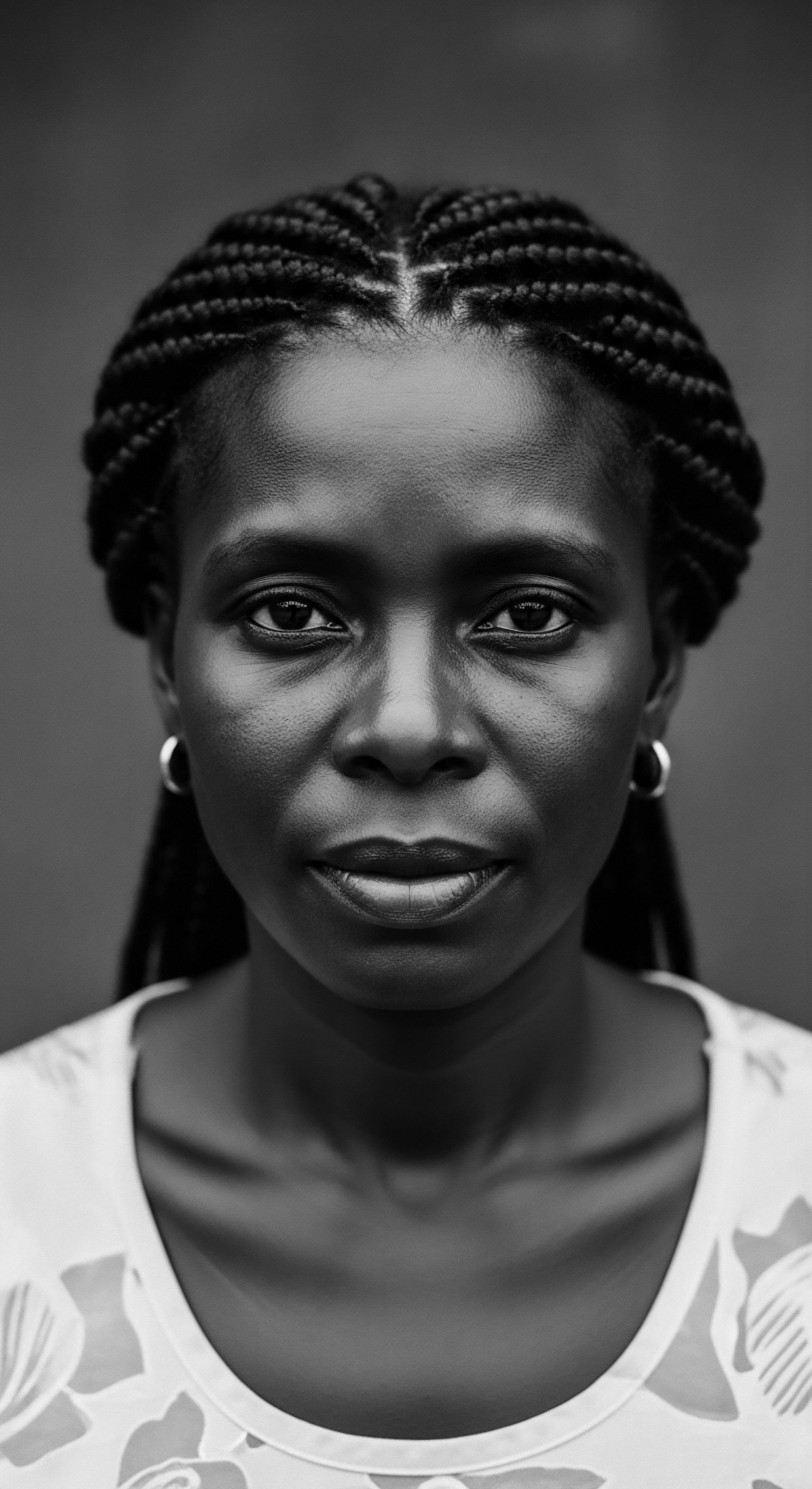
Hair as Resistance and Reclamation
During the transatlantic slave trade and its aftermath, the relationship between hair and social standing underwent profound, traumatic shifts. Enslaved Africans were often stripped of their traditional tools and practices, their hair neglected or forcibly shorn as a means of dehumanization. Yet, even in these dire circumstances, hair became a hidden language, a repository of cultural memory. Braids might conceal seeds for future planting, or communicate escape routes, holding a silent, secret social power among those who understood its coded messages.
After emancipation, for many, the adoption of straightened hair became a means of survival, an aspiration towards integration into a dominant society that valued Eurocentric beauty standards. This was not always a rejection of heritage but often a strategic decision, reflecting a complex navigation of a new, often hostile social landscape.
- The Afro ❉ During the Civil Rights and Black Power movements of the mid-20th century, the Afro emerged as a potent symbol of Black pride, self-acceptance, and political defiance. It was a visible rejection of imposed beauty norms and a declaration of racial identity and solidarity, reshaping social perceptions of Black hair.
- Dreadlocks in Modern Contexts ❉ Beyond their spiritual associations, dreadlocks have, in contemporary society, also served as a statement against corporate conformity and traditional professional aesthetics. Their presence in certain fields can still challenge established norms, signifying an individual’s commitment to cultural authenticity or counter-cultural ideals, thus influencing their perceived social standing within those contexts.
- Natural Hair Movement ❉ The modern Natural Hair Movement represents a broad-based cultural reclamation, encouraging individuals of African descent to wear their textured hair in its natural state. This movement has shifted perceptions of beauty and professionalism, advocating for the acceptance and celebration of diverse hair textures in all social spheres, challenging and redefining what ‘professional’ or ‘beautiful’ hair signifies.
The modern natural hair movement, a powerful contemporary iteration of this historical relay, stands as a testament to the enduring significance of textured hair. It actively challenges the notion that Eurocentric hair ideals are the sole markers of professionalism or beauty. By embracing coils, curls, and kinks in their natural forms, individuals are not just making a personal style choice; they are making a statement about self-acceptance, ancestral connection, and the redefinition of social aesthetics. This act of conscious choice, often made in the face of continued societal pressures, speaks volumes about one’s standing within a community that values authenticity and cultural legacy.
The evolution of legislation like the CROWN Act in various states, prohibiting discrimination based on hair texture or style, directly reflects this ongoing societal negotiation and the increasing recognition of hair as an integral part of racial and cultural identity. (CROWN Act, 2024)

Reflection
In every coil, every braid, every carefully chosen adornment, we find not merely fiber and form but the very soul of a strand, vibrating with echoes of generations past. The rich heritage of textured hair traditions, stretching from the hallowed courts of ancient kingdoms to the vibrant streets of our present day, offers a profound chronicle of human experience. It is a story told in silent symbols, in the patient hands that shaped and tended, and in the watchful eyes that interpreted each style as a map of social standing and personal journey. This journey, ever unfolding, reminds us that textured hair is far more than a biological endowment; it is a living archive, a repository of ancestral wisdom, resilience, and the enduring quest for self-expression.
Our contemporary understanding of textured hair, marrying scientific insight with cultural reverence, allows us to appreciate the genius of those who came before us. They knew, intuitively, what modern science now validates ❉ that the unique structure of textured hair allows for unparalleled versatility and protection. Their practices, born of necessity and wisdom, laid the groundwork for today’s holistic care.
We stand today as custodians of this vibrant legacy, called to honor the profound connections between hair, identity, and social meaning. As we continue to learn from the tender threads of the past and witness the unbound helix of the future, we recognize that the story of textured hair is, at its heart, a continuous celebration of heritage, a luminous testament to the enduring spirit of a people.

References
- Byrd, Ayana D. and Lori L. Tharps. Hair Story ❉ Untangling the Roots of Black Hair in America. St. Martin’s Press, 2001.
- Banks, Ingrid. Hair Matters ❉ Beauty, Power, and the Politics of Racial Aesthetics. New York University Press, 2000.
- Johnson, Walter. Soul by Soul ❉ Life Inside the Antebellum Slave Market. Harvard University Press, 2002.
- Mercer, Kobena. Black Hair/Style Politics. In Welcome to the Jungle ❉ New Positions in Black Cultural Studies. Routledge, 1994.
- Robins, Gay. Women in Ancient Egypt. Harvard University Press, 1993.
- CROWN Act. The CROWN Act (Creating a Respectful and Open World for Natural Hair). Legislative efforts across U.S. states. (Accessed June 2024, specific state legislation varies).
